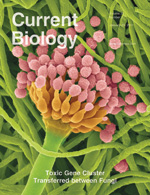Behind slammed doors, most teenagers fervently wish at least once that they could belong to another family. One that was hipper, permissive, richer—somehow more in line with their needs. Turns out a group of fungi—23 genes to be exact—successfully pulled off this swap, switching families millions of years ago. The discovery of this leap by a College of Arts and Science researcher is helping recast Darwin’s lasting metaphor of the tree of life.
In Origin of Species, Charles Darwin diagrammed his theory of the evolutionary process from parent to child, down through generation after generation (now known as vertical gene transfer), resulting in Darwin’s famous tree of life.
But a recent discovery by Antonis Rokas, assistant professor of biological sciences, reveals that Darwin’s sketch may not show the full picture of evolution. Rokas’ current research focuses on how fungi change over generations, leading to better understanding of the evolutionary relationships among living organisms and how diversity has evolved. The Rokas Lab found that millions of years ago, a cluster of 23 genes jumped intact from a strain of mold commonly found on starchy foods to an unrelated strain that lives in dung and specializes in breaking down plant fibers.
 He and research associate Jason Slot reported their discovery in the journal Current Biology earlier this year. Their finding came as a major surprise to scientists because there are only a handful of cases in recent evolutionary history where this type of gene transfer between organisms, known as horizontal gene transfer, has been found in complex cells like those in plants, animals and fungi. Rokas’ findings have even made “Sminton,” a science-based Web comic strip that riffs off recent newsworthy scientific publications.
He and research associate Jason Slot reported their discovery in the journal Current Biology earlier this year. Their finding came as a major surprise to scientists because there are only a handful of cases in recent evolutionary history where this type of gene transfer between organisms, known as horizontal gene transfer, has been found in complex cells like those in plants, animals and fungi. Rokas’ findings have even made “Sminton,” a science-based Web comic strip that riffs off recent newsworthy scientific publications.
“The fungi are telling us something important about evolution…something we didn’t know,” Rokas says.
The interspecies transfer that Rokas discovered suggests how fungi developed their remarkable metabolic diversity, including the ability to produce highly toxic compounds. It also supports the notion that similar jumping genes played a significant role in fungal evolution. The fungal kingdom currently presents the best place for genomic research because complete genome sequences are already available from more than 100 species.
The research was supported by funds provided by the Searle Scholars Program and the National Science Foundation.
Read more about their research.
